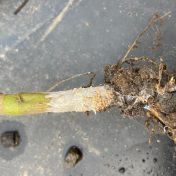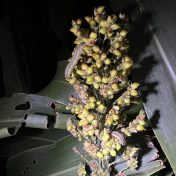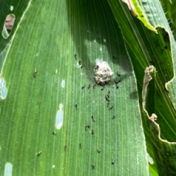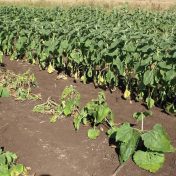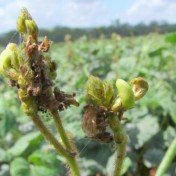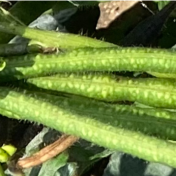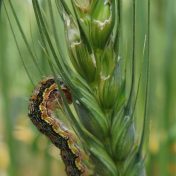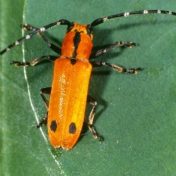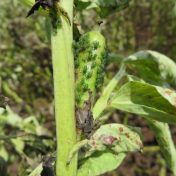Warm, wet conditions have led to isolated outbreaks of the fungal pathogen, Sclerotium rolfsii, in sorghum and grain legume crops across southern Queensland (although other regions are also at risk) and several disease outbreaks in mungbean crops growing throughout Queensland and northern New South Wales. Sclerotium rolfsii Sclerotium is a soilborne pathogen that can infect a wide range of plant… Read more »
Maize and sorghum crops across Queensland are experiencing extreme fall armyworm (FAW) pressure. In Central Queensland in particular, sorghum planted in the typical planting window has been heavily impacted by the very high FAW pressure. Persistent, high-density infestations pose a risk to crops from emergence through to grain fill. In an unwelcome development not observed in previous seasons, large FAW… Read more »
Late sorghum is susceptible to FAW damage, and potential yield loss, in the vegetative stage. This article discusses how the yield loss happens and how to determine if your crop is at risk. The information below was generated from both sorghum trials being undertaken at the Gatton research station funded by the Queensland Government and GRDC in collaboration with QAAFI… Read more »
The recent declaration of El Niño conditions for eastern Australia means an increased chance of below average rainfall. Historically, these conditions can lead to more severe outbreaks of tobacco streak virus. However, with forward planning and selection of suitable sunflower hybrids, the risk of economic impacts from TSV can be avoided. If sunflowers crops are planned for early 2024 in… Read more »
A new APVMA permit (PER 93132) allows the use of a spray drift management tool (SDMT) to re-calculate buffer zones to suit your particular situation when applying some pesticides. The SDMT (available as a spreadsheet file) and other relevant documentation (including a video on how to use the calculator) and a copy of PER93132 can be found on the APVMA… Read more »
There have been several reports of Fusarium wilt affecting mungbean paddocks throughout southern Queensland within the last couple of weeks. Monitor crops closely for disease symptoms, and contact our plant pathologist, Lisa Kelly at [email protected] or 0477 747 040 for further information on disease diagnosis. Minimise the spread of the disease by avoiding movement through infected paddocks and thoroughly removing… Read more »
A severe outbreak of phytoplasma disease has been reported in mungbeans from the Burdekin region. Symptoms of little leaf, phyllody (greening of flower structures) and puffy pod became obvious in mid-late October and have now affected a high incidence of plants in a 25 ha planting. Puffy pod affected plants typically remain green for longer than healthy mature plants. This… Read more »
Many regions in Qld and northern NSW are still experiencing an outbreak of Helicoverpa armigera in wheat. Before the last significant outbreak occurred in 2016, it had been many years since anyone had seen such an event, and while there was a smaller outbreak in 2020, it was not on the scale or severity of this year. In many crops… Read more »
Last week the Australian Pesticides and Veterinary Medicines Authority (APMVA) updated minor use permit PER88226 for the in-furrow application of fipronil to manage lucerne crown borer (Zygrita diva, LCB) in soybeans at planting. Changes include: Extension of expiry date to 30 September 2025 Addition of a re-entry statement and S161 statement Adjustments to the protection statement Moving spray drift to… Read more »
History of FBA in Australia Faba bean aphid (FBA; Megoura crassicauda) originated from East Asia. First recorded in Australia in October 2016 in Sydney, FBA was confirmed in northwest NSW (Tamworth and Breeza) in September 2017. The aphid outbreak was controlled using Aphidex (500 g pirimicarb/kg). FBA was not observed again until 2020, where it was recorded on faba bean… Read more »
